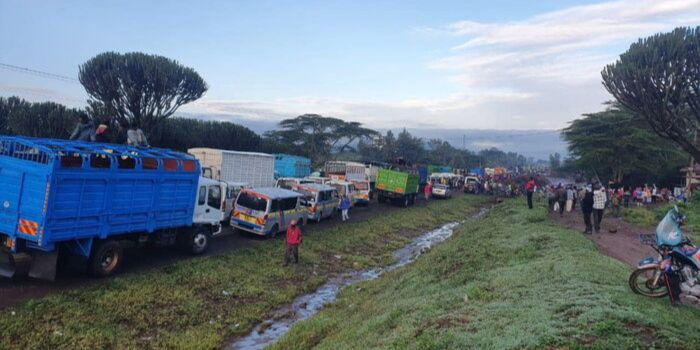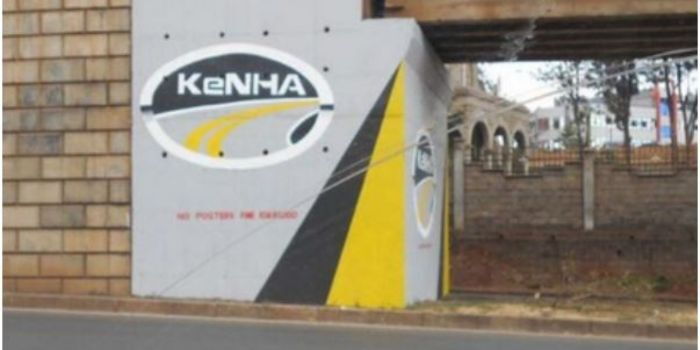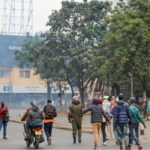Motorists traveling between Nairobi and Narok can relax. The scary viral photo showing a huge crack along the highway has been proven false.
This week, social media was flooded with an alarming picture. It appeared to show a massive crack cutting across the busy Nairobi–Narok Highway in Suswa. Cars and pedestrians in the image looked stranded as engineers worked to repair the road.
The picture spread fast on Facebook, X (Twitter), and WhatsApp. Many Kenyans worried about safety.
Some demanded that the Kenya National Highways Authority (KeNHA) act immediately.
But now, fact-checkers have set the record straight. Media Observer, a publication of the Media Council of Kenya that works to expose fake news, has confirmed that the claims are false.
📰 Also Read This:
“There is no recent crack on the Nairobi–Narok Highway, and motorists on that route are not facing such disruptions,” the agency stated.
According to Media Observer, the viral photo is not from Suswa. It is from the Maai Mahiu–Narok Road, taken in April 2020.
Back then, heavy flash floods destroyed a section of the Maai Mahiu–Narok Road. The floods caused a ten-meter-deep crack, completely cutting off transport. KeNHA engineers rushed to the site and carried out emergency repairs. The road was fixed and reopened within four days.
Media Observer explained that the old photo was lifted from 2020 news coverage. Someone reused it out of context to make it look like a current disaster on the Nairobi–Narok Highway.
“The photo matches April 2020 news coverage of the eroded section of the road and subsequent repairs,” Media Observer clarified.
This is not the first time such incidents have been used to cause panic. In 2023, a different crack did appear on the Maai Mahiu–Narok Road, forcing KeNHA to close it temporarily. Motorists had to find alternative routes until the damage was repaired.
Road safety remains a sensitive topic in Kenya. False alarms like this can cause confusion and unnecessary fear. They can also harm the reputation of government agencies that work hard to maintain road infrastructure.
The Media Council of Kenya continues to urge the public to verify news before sharing. Misinformation spreads quickly online, but the truth often takes more effort to confirm.
This latest case shows how a photo from years ago can reappear and spark panic. It also highlights why fact-checking platforms like Media Observer play a critical role in keeping the public informed.
Motorists using the Nairobi–Narok Highway today will find it open and safe. Traffic is moving normally, and there is no sign of a recent crack or damage in Suswa.
The public is reminded: Always check the source of alarming images or videos. When in doubt, follow updates from official agencies like KeNHA and verified news outlets.










